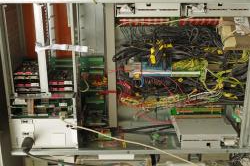How Embedded Controllers are Changing the World
With the evolving times and fast-advancing technologies, smart devices, computerized systems and other industrial applications are heavily relying on miniature computing. In today’s world, embedded systems are a critical part of the daily average person ranging from their application in homes, offices, industries and even personal gadgets.
These embedded systems have become a crucial part of real life partly due to their ease of use, minimal intervention and availability. The engineering behind these systems is to meet the requirements while being efficient, low powered and meeting essential demands. Some of the devices that we used daily with smart devices include microwaves, smart ovens, refrigerators, washing machines, and smart lighting, to mention but a few.
Artificial intelligence and machine learning in recent days have been in the limelight with many investors and a major key player in the world of technology contributing to its growth. The application of machine learning and artificial intelligence is virtually limitless. The heart of most devices using this technology are embedded systems. As the use of embedded systems continues to grow within every industry and sector, so does technology.
Embedded systems and embedded controllers are often used interchangeably and for the most part, can pass for each other. However, there is a slight difference in meaning.
Embedded Systems vs Embedded Controllers
An embedded system is a combination of hardware and software designed for a specific purpose, often with real-time constraints. It typically consists of a microcontroller, memory, input/output peripherals, and sometimes additional hardware such as sensors or actuators. Embedded systems are used in a wide range of applications, including consumer electronics, automotive, aerospace, and industrial automation.
An embedded controller is a type of microcontroller, often just referred to as a microcontroller, that is specifically designed for controlling a specific device or system. It is typically used in embedded systems that require precise control over the operation of mechanical or electrical components. Embedded controllers often have specialized features such as analogue-to-digital converters, timers, and communication interfaces that make them well-suited for controlling a specific system.
In general, an embedded controller is a specific type of microcontroller that is designed to perform a specific function within an embedded system. Meanwhile, an embedded system can consist of various components, including microcontrollers, and is designed to perform a specific task or set of tasks. Thus, an embedded system is the device and interface that we interact with daily while the microcontroller is the control unit that gives life to the technology.
Over the years, embedded controllers have evolved significantly with major improvements and advancements from the earliest microprocessors and iterations of a microcontroller to the advanced microcontrollers we use today.
Why embedded controllers
Embedded controllers are found in a wide variety of devices, products and systems from household appliances and medical devices to industrial machinery and automotive systems. Their application also can be vastly diverse from simple automation applications such as light control to entire industrial automation setups. With the rise of IoT and industrial application of IoT (IIoT), applications in the industrial sector have rapidly expanded.
Aside from their simplicity, inexpensiveness and a vast array of applications, embedded systems are chosen for their other advantages. Compared to traditional computers and microprocessors, embedded controllers are the key enablers of modern automation.
Here are a few key indicators of how embedded systems have evolved and changed the world of automation and modern miniaturized computing:
Improved efficiency
Embedded controllers are helping to improve efficiency in a variety of applications, from smart homes to industrial automation. By automating routine tasks and optimizing processes, these controllers can help reduce waste, save energy, and streamline operations.
Enhanced functionality
Embedded controllers are enabling new and innovative features in a wide range of products, from cars and smartphones to medical devices and appliances. These controllers are making it possible to deliver new levels of performance, functionality, and convenience to consumers and businesses.
Increased automation
Embedded controllers are helping to drive the automation of many industries, from manufacturing and logistics to agriculture and healthcare. By automating routine tasks, these controllers can help increase productivity, reduce costs, and improve quality control.
Greater precision and accuracy
Embedded controllers are enabling greater precision and accuracy in many applications, from medical devices and scientific instruments to automotive systems and consumer electronics. By controlling and monitoring specific functions, these controllers can help ensure that products and systems operate reliably and accurately.
Advancements in technology
Embedded controllers are driving advancements in technology, from the Internet of Things (IoT) to autonomous vehicles and smart cities. These controllers are enabling the development of new technologies and systems that are transforming the way we live, work, and interact with the world around us.
Integration of communication interfaces
In the mid-2000s, microcontrollers began to integrate communication interfaces, such as Ethernet, Wi-Fi, and Bluetooth, which made it possible to connect devices to the internet and other devices. This paved the way for the development of the Internet of Things (IoT).
Advancements in power efficiency
In recent years, microcontrollers have become more power-efficient, with the development of low-power processors, sleep modes, and power management systems. This has enabled the development of battery-powered devices that can operate for extended periods.
Advanced functionality and security
Today's microcontrollers offer advanced functionality, such as real-time operating systems, graphics processing, and machine learning capabilities. They also incorporate advanced security features to protect against cyber threats.
Embedded controllers are shaping the world we live in, enabling new levels of efficiency, functionality, and automation across a wide range of industries and applications. As technology continues to advance, microcontrollers are likely to continue to evolve and play an increasingly important role in our lives.
Exploring Embedded Controllers in Real Life
As earlier said, the application of embedded controllers has become immense and the potential of further exploration is still underway. With these advancements and vast applications, the impact of this technology is revolutionary and is shaping the future.
Embedded controllers are changing the world in several ways, thanks to their ability to improve efficiency, increase productivity, and enhance functionality in a wide range of applications. Here are a few examples:
Smart Home Automation and Home Appliances
In terms of vast applications and the most widely explore uses of embedded controllers, home automation carries the day. This is perhaps due to the simplicity of using embedded controllers and embedded systems, enabling small applications, simple smart devices, DIY projects of automation and other reliable solutions to smart monitoring and even security systems.

Embedded controllers are a key component of the smart home revolution, enabling homeowners to remotely monitor and control their appliances, heating and cooling systems, security systems, and more. This allows for greater energy efficiency, convenience, and comfort.
Health Management Systems
Embedded controllers are playing an important role in healthcare, enabling the development of advanced medical devices that can monitor and administer medication with greater accuracy and precision. This improves patient outcomes and reduces the risk of errors.
Medical Devices
Over the longest time, medical devices and other healthcare-related systems have tried to incorporate embedded systems. This allows for easier monitoring, management and even automation of simple processes. The systems can gather and collect data on a patient’s condition and monitor progress in treatment by monitoring heart rate, pulse rate and other vitals. The information can be relayed to caregivers or doctors via the cloud.
Medical devices, such as pacemakers and insulin pumps, rely on embedded controllers to monitor vital signs and even administer medication. These controllers are designed to operate reliably and accurately in a wide range of conditions
Automobiles and Autonomous Vehicles
With the advent of the booming exploration in autonomous and self-driving vehicles, such as self-driving cars, autonomous submarines and unmanned drones, the use of embedded controllers has played a key role. Providing navigation systems, IoT modules, battery management systems and other subsystems that relay all the needed data to the users. Embedded controllers are a critical component of autonomous vehicles, enabling them to monitor their surroundings, make decisions, and take action without human intervention. This has the potential to revolutionize transportation and make it safer and more efficient.
In modern automobiles, embedded systems are designed and fitted to provide a better customer experience whilst also providing enhanced safety on the road. The result of this has been realized with lower traffic fatalities over the years.
Adaptive speed control, automobile breakdown warning, pedestrian detection, merging assistance, airbags, and other active safety systems are some prominent examples. These are a few of the characteristics that are expected to reduce the risk of accidents and increase demand for embedded systems throughout the world.
Industrial automation
With Industry 4.0 on the cusp of fruition, embedded controllers are playing a vital role in its realization being the link between modern technology, IoT and industrial systems. Most industrial systems and setups are adopting machine learning and artificial intelligence to improve work efficiency, accuracy, repeatability, and safety and reduce the cost of labour. This is possible since machines using sophisticated algorithms can identify defects, reduce downtime and diagnose systems before failure.
Embedded controllers are used in industrial automation systems to control machinery and monitor production processes. These controllers can operate in harsh environments and are designed to withstand high temperatures, vibrations, and other stresses. In such applications robots are designed to perform tasks that are considered dangerous. Robots are equipped with embedded systems, employing the use of sensors actuators and feedback from other systems to perform the tasks safely.
Consumer electronics
Devices like smartphones, tablets, and smart speakers use embedded controllers to manage their complex functions and interfaces. These controllers help to optimize battery life, reduce power consumption, and enhance user experiences.
Overall, the evolution of microcontrollers has enabled the development of a wide range of devices and systems, from simple household appliances to complex industrial machinery and the Internet of Things. As technology continues to advance, microcontrollers are likely to continue to evolve and play an increasingly important role in our lives.
FAQs
What is an embedded controller?
An embedded controller, also known as a microcontroller, is a small computer system that is designed to control and manage specific tasks within electronic devices.
How are embedded controllers changing the world?
Embedded controllers are changing the world in several ways, such as improving efficiency, enhancing functionality, increasing automation, and enabling new technologies and systems.
What are some examples of applications that use embedded controllers?
Examples of applications that use embedded controllers include smart homes, medical devices, automotive systems, industrial automation, and the Internet of Things (IoT).
How do embedded controllers impact healthcare?
Embedded controllers are playing an important role in healthcare, enabling the development of advanced medical devices that can monitor and administer medication with greater accuracy and precision, leading to improved patient outcomes and reduced risk of errors.
What is the role of embedded controllers in the Internet of Things (IoT)?
Embedded controllers are a critical component of the IoT, enabling devices to communicate with each other and with the internet, and enabling the development of new technologies and systems that are transforming the way we live and work.
What are some future developments in embedded controllers?
Future developments in embedded controllers are likely to include advancements in processing power and memory, integration of communication interfaces, improvements in power efficiency, and advanced functionality such as machine learning and artificial intelligence
Any interest Please feel free to contact us.Looking forward to your cooperation here:)
















